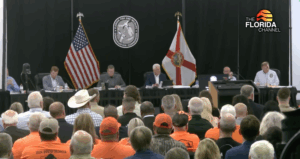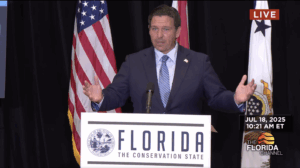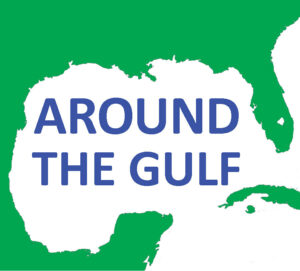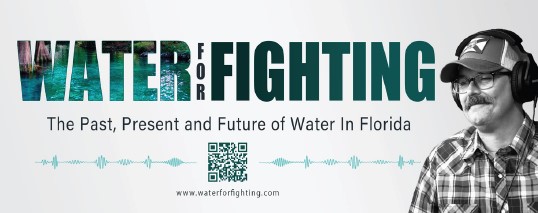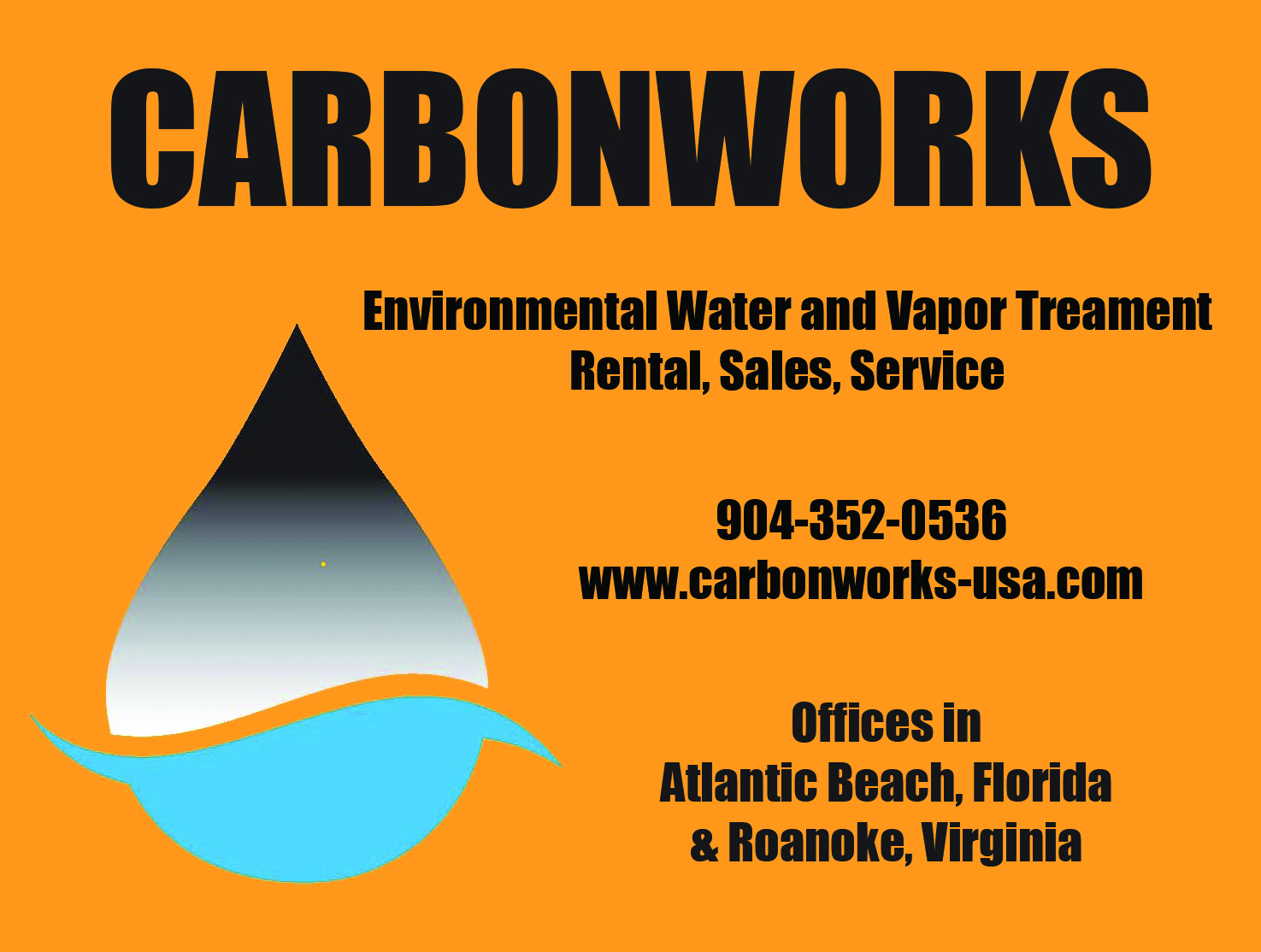2023 North Florida Water Supply Plan Approved

The St. Johns River Water Management District’s (District) Governing Board recently approved the 2023 North Florida Regional Water Supply Plan (NFRWSP), striking a balance between growth and conservation. The NFRWSP was collaboratively developed by the District and the Suwannee River Water Management District (SRWMD) building upon groundwork established in 2017.
The 2023 NFRWSP is a joint planning effort involving the Florida Department of Environmental Protection, SRWMD, local governments, public supply utilities, environmental advocates, business organizations, agricultural commodity groups and other stakeholders. The water supply initiative evaluates existing and future water demands and forecasts potential impacts on regional water resources.
Findings indicate traditional groundwater sources cannot meet the projected 2045 increased groundwater demand of 135 million gallons per day (mgd) while maintaining the integrity of water resources and ecosystems. The Plan outlines strategic water conservation, supply and resource development projects aimed at producing 160 mgd to bridge the projected water demand gap.
SFWMD Governing Board Approves Contract to Complete Biscayne Bay Coastal Wetlands Project
The South Florida Water Management District (SFWMD) Governing Board approved the final construction contract for the Biscayne Bay Coastal Wetlands (BBCW) Project in Miami-Dade County in December. This key restoration effort for Biscayne Bay is one of several Comprehensive Everglades Restoration Plan projects prioritized by the state’s administration.
Central Florida Equipment Rentals, Inc. has been awarded the BBCW Cutler Flow Way Conveyance System Project contract, which includes a 7,000-foot concrete-lined channel, box-culvert and micro tunnel culvert, a 2.5-mile rehydration canal, and recreational features. The project is scheduled to be completed by 2026.
The BBCW will restore freshwater flows to southern Biscayne Bay and Biscayne National Park, improving salinity distribution near the shore. The project will also restore freshwater wetland habitat adjacent to the Bay helping moderate seasonal water supply variations. Reestablished nearshore ecosystems and mangrove preservation and enhancement will provide nursery habitat for key marine wildlife, including shellfish.
Florida State Parks Foundation Celebrates Landmark Year
The Florida State Parks Foundation rolled out a new initiative to encourage environmental sustainability, while embarking on a transformational partnership to amplify the role of state parks in the Florida Wildlife Corridor and set a fundraising record for the second consecutive year.
Through an array of community partners and grassroots donors, the Foundation secured nearly $2.1 million to preserve, protect, sustain, and grow Florida’s state parks. The foundation has had an extraordinary 2023.
“Florida’s state parks are the best in the country, and it is an honor to do all we can to support them,” said Foundation President Kathleen Brennan. “Not only have we had an outstanding year of fundraising, but we are also proud to have played a role in a remarkably wide variety of park projects, campaigns and educational initiatives.”

In addition to grant funding to establish accessibility infrastructure, the “Explore Our State Parks” specialty license plate garnered $400,000 and an additional $100,000 was raised for the Plant a Pine Program, allowing one long leaf pine seedling to be planted for each $1 raised. Partnership programs raised awareness of the Florida Wildlife Corridor and supported community participation.
In November the Foundation also surpassed its fundraising goal for a major construction project at Fort Mose Historic State Park in St. Augustine. The project – a full-scale, life-sized reconstruction of the 1738 Fort Mose – will break ground on Jan. 19, 2024. Once complete, the project will help to fully tell the story of Fort Mose, the first legally sanctioned free African community in what is now the United States.
“Whether you’re in the Florida Panhandle, the Florida Keys or anywhere in-between, there is an amazing state park nearby,” Foundation CEO Julia Gill Woodward said. “There are so many things that make our state parks great, and there are just as many great ways to support them.”
Local Artist Creates Award-Winning Mosaic Mural in Orange County Park

Cherie Bosela’s Natural Florida, a mosaic art installation commissioned by Orange County to transform a wall of concrete block at Bomberos Field Park, has been accepted into the Mosaic & Glass Arts International 2023 exhibit. The mural is a colorful depiction of Florida greenery, flowers, plants, and Sandhill Cranes.
The mural took eight months to complete. It is composed of handmade, hand-glazed tiles and shapes hand-cut from Daltile’s Natural Hues ceramic tiles for the background. The tiles were hand-cut from rolled clay when it was still soft, then hand-glazed.
“Seeing the vibrant colors I was able to produce with the handmade tiles was incredibly emotional for me,” Bosela admitted. “This was my first public art project, so it was a big step in my career, plus I really enjoyed working with Orange County, which was very responsive to any questions I may have had.”
Marion County Residents can apply for reimbursements for septic system maintenance and repair
Marion County community participation in the county’s annual Run for the Springs 5K is affording Marion County residents an opportunity to obtain reimbursements for septic system maintenance and repair.
Home and business owners using septic systems in unincorporated Marion County are eligible for reimbursement through the Run for the Springs grant program. Qualified applicants may receive up to $125 for septic system inspections and pumping by septic service professionals and up to $250 toward a septic system repair permit.
The grants are available for work occurring after October 1, 2023. There is a limit of two (2) per year per applicant (one home location; one business location). Each location is eligible every four (4) years. An application must be submitted and approved prior to work being performed. Work done prior to grant approval is not eligible and will not be approved.
Collier County’s Barefoot Beach Preserve Opens with Limited Parking
Collier County Parks & Recreation Division has opened Barefoot Beach Preserve. The facility and shoreline were heavily damaged by Hurricane Ian. The preserve is located at 503 Barefoot Beach Boulevard, Naples, Florida. Two of the three parking lots are available for parking and four portable restrooms and one wash station are available for public use.
Collier County Park Rangers will monitor parking availability on-site and provide directions to access the beach.
Sarasota County Natural Areas and Gardens Interactive “Story Maps” Launched
Each “story map” tool is available for computer, tablet, or smartphone. The interactive application allows users to learn more about the habitats Sarasota County has launched a pair of new interactive web applications that allow visitors to take a virtual hike through one or more of Sarasota County’s many natural areas or spend some screen time exploring shared gardening spaces in the area.
, wildlife, history and more at an array of county preserves and parks, and to get information about the locations and history of community and demonstration gardens across the area. The story maps also provide an accessibility option for individuals who may have difficulty visiting these spaces.
Story maps combine text, maps, images, and videos. The Community and Demonstration Gardens Story Map highlights the locations of various gardens, links to venue information, and provides history of the gardens and photos of resources at each site. The tool helps showcase how gardens serve as community connection spaces and areas to grow fresh food, support sustainable landscaping, and native wildlife.
The two new story maps join a Water Quality Initiatives Story Map released by the county earlier this year. That tool shares information about the commitment by the Sarasota County Board of County Commissioners to water quality, with investments totaling into the hundreds of millions of dollars for infrastructure improvements, restoration projects, and more.

Polk County Farmer Named 2024 Florida Farm Bureau Farmer of the Year
Jason Watts of Florida Best Farms in Polk County has been named the 2024 Florida Farmer of the Year by the Florida Farm Bureau Federation. Watts and his family farm blueberries and muscadine grapes, raise beef cattle, and own a packing house.
The Watts family practices sustainable farming by applying efficient practices, including rain gauges, micro jet irrigation and a comprehensive waste management plan. They also operate an exotic vegetation removal service for state and federal government entities.
“I am honored to be named the 2024 Florida Farmer of the Year and represent the Florida Farm Bureau,” said Watts. “It is very humbling to be part of such an elite group of farmers who have received this award. I grew up, aspiring to be like many of the past recipients, and am looking forward to representing Farm Bureau and helping to educate more people about agriculture and its importance to our state.”
Florida Department of Environmental Protection Awards Funds to Protect Wakulla County’s Aquifer
The Florida Department of Environmental Protection (DEP) recently awarded Wakulla County $4,942,250.00 to replace the irrigation system and install rapid infiltration basins (RIBS) for aquifer recharge at the Wakulla County Golf Course (Golf Course). The grant will be made available through the DEP Alternate Water Supply Program which is funded by State and Local Fiscal Recovery Funds and Springs Funds.
The Golf Course is in a Primary Focus Area of the Wakulla Springs Basin Management Action Plan (BMAP) created to restore water quality within the basin. The County has implemented multiple strategies to achieve this goal.
Wakulla County has worked with DEP since 2012 to initially expand treatment capacity to .650 mgd using the most stringent advanced wastewater treatment standards, then to increase capacity to 1.2 mgd with an average current flow of .780 mgd. The county can now apply 600 mgd onto the Golf Course to recharge the aquifer safely. Upon completion of the RIBS and Golf Course spray system, the County plans to have an application capacity of 2.0 mgd.
St. Johns County Celebrates Historic Rebound for Sea Turtle Population After 2023 Nesting Season
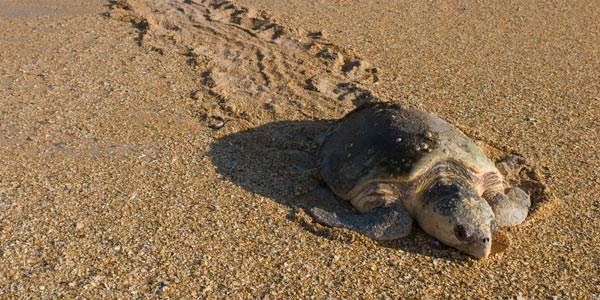
Saint Johns County has announced all the sea turtle nests on the county’s beaches have finished hatching and the results are stellar. According to the county’s Environmental Division Habitat Conservation Section, 2023 is the first year the county ever recorded triple-digit green sea turtle nests. A total of 133 nests of 1,205 were counted by volunteers. Of the remaining 1,072 nests, 1,057 belonged to loggerhead turtles and 15 to leatherback sea turtles.
In total, St. Johns County estimates 79,811 hatchlings emerged from these nests and made their way to the Atlantic Ocean, resulting in an historic rebound for Sea Turtle populations.
St. Johns County recorded these conservation successes amid multiple full-scale beach nourishment projects renourishing St. Johns County beaches in the wake of erosion from Hurricane Ian and Hurricane Nicole. According to Stephen Hammond, coastal environment project manager for St. Johns County, these projects all brought in a substantial amount of sand to the beaches, not only rebuilding the dunes but also the flat portion of the beach where turtles traditionally nest. The activity demonstrated that even comprehensive efforts to renew beaches can be undertaken without disrupting the life cycles of Florida’s native species.
According to Ashley Raybould, environmental supervisor of St. Johns County Beach Services’ Habitat Conservation Program, conservation efforts put into place around 30 years ago (a generation for sea turtles) are reaping positive results before our eyes. “Things like people staying off the beach at night, keeping the beach dark, and protecting their habitat in any way that we can,” Raybould said. “Sea turtles are very long-lived animals, and they don’t reach maturity until a minimum of 20 years of age, so it’s important not to let up the gas on any of these conservation efforts and to keep endangered species in mind while we’re growing.”
$100 Million for Projects to Restore the Indian River Lagoon
On December 18, 2023, Florida’s Governor announced the first awards through the newly established Indian River Lagoon (IRL) Protection Program. $100 million in state funding has been provided to support 21 priority water quality projects that will reduce the amount of harmful nutrients entering the IRL.
The IRL is the most biologically diverse estuary in North America. Since 2019, the state has awarded nearly $390 million to improve water quality in the IRL region.
“The Indian River Lagoon is one of the state’s most iconic waterways, and we are committed to meeting the challenges it faces head on,” said Florida Department of Environmental Protection Secretary Shawn Hamilton. “With the historic funding secured by Governor DeSantis and the Florida Legislature, we are able to implement important projects to improve water quality in the Indian River Lagoon.”
Projects under the IRL Protection Program will address the root causes of nutrient pollution by investing in wastewater treatment upgrades, septic-to-sewer connections, stormwater treatment and other needed restoration projects to reduce total nitrogen loading in the region by more than 375,000 pounds per year.
Corps announces EA and FONSI for Caloosahatchee River – Alum Treatment Project
The U.S. Army Corps of Engineers (Corps) Jacksonville District announces the availability of the final Environmental Assessment (EA) and Finding of No Significant Impact (FONSI) for Caloosahatchee River (C-43) West Basin Storage Reservoir – Reservoir Alum Treatment Project in early December.
The EA was conducted in response to a request from the South Florida Water Management District to modify Caloosahatchee (C-43) West Basin Storage Reservoir (C-43 WBSR) by constructing an Alum Injection System on the C-43 WBSR Pump Station 470. The EA evaluated various alternatives proposed by the SFWMD to improve water quality in the Caloosahatchee River and downstream estuary in the study area.
The in-reservoir alum treatment system will be installed at the inflow of the C-43 WBSR. Rapid, high-energy mixing of the alum will occur within the suction intake through the S-470 pumps, and in the discharge piping of Pump Station S-470 into the C-43 WBS.
The C-43 WBSR project is designed to capture and store water from Lake Okeechobee and the C-43 Basin during Florida’s rainy season, retaining excess water during the wet season to minimize high flows which cause freshwater flushing in the estuary. The C-43 WBSR is currently under construction on a 10,700-acre (ac) parcel owned by South Florida Water Management District (SFWMD) and, when fully constructed, it will store approximately 55.4 billion gallons of water (170,000 ac-feet), for the Comprehensive Everglades Restoration Plan (CERP) project.
The EA has been prepared and has been coordinated for Federal, Tribal, state, and public review. All comments submitted during the public review period have been responded to in the Final EA.


